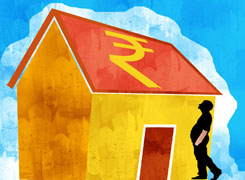30-year-old single parent seeks advice on generating wealth for child's education and higher studies
Ramalingam Kalirajan |10902 Answers |Ask -Follow
Mutual Funds, Financial Planning Expert - Answered on Jul 29, 2024
He has an MBA in finance from the University of Madras and is a certified financial planner.
He is the director and chief financial planner at Holistic Investment, a Chennai-based firm that offers financial planning and wealth management advice.... more

Hello , My age is 30 and have investments as follows: 15 lacs in fd , 15 lacs in nsc, 5.5 lacs in ppf which will go upto 10 lacs in next 3 years (during maturity), 5 lacs in stocks and 2 sip 10k in quant elss tax saver fund & 6k in kotak elss tax fund , 5k/m contribution in nps.I have housing rent which is 35k/m and monthly expense upto ?6k. I am the only one earning at home. I want to generate wealth to cover my childs education and higher studies.
Current Investment Overview
Fixed Deposits: Rs 15 lakhs
National Savings Certificate (NSC): Rs 15 lakhs
Public Provident Fund (PPF): Rs 5.5 lakhs (expected to grow to Rs 10 lakhs in 3 years)
Stocks: Rs 5 lakhs
SIPs: Rs 10,000 in ELSS tax saver fund, Rs 6,000 in another ELSS tax fund
National Pension System (NPS): Rs 5,000 monthly
Housing Rent: Rs 35,000 monthly
Monthly Expenses: Rs 6,000
Analysis of Your Current Portfolio
Fixed Deposits and NSC: These are low-risk, but returns are often low. They provide stability but may not keep pace with inflation.
PPF: This is a safe and tax-efficient option. It is a good long-term investment.
Stocks: High-risk, high-reward. Requires careful selection and monitoring.
SIPs in ELSS Funds: These offer tax benefits and potential for good returns. However, avoid duplication in fund choices.
NPS: Good for retirement planning. Offers tax benefits and disciplined savings.
Recommendations for Wealth Generation
Diversify Investments: Avoid putting too much in low-return options. Consider increasing exposure to equity mutual funds for higher growth potential.
Review ELSS Funds: Having two ELSS funds is redundant. Opt for one well-performing ELSS fund. This simplifies management and can boost returns.
Increase Equity Exposure: Allocate more to equity mutual funds. These funds generally offer better returns over the long term.
Regular Fund Investing: Consider investing through regular funds with a Certified Financial Planner. This ensures professional guidance and avoids common investment mistakes.
Avoid Direct Funds: Direct funds lack professional advice. Regular funds with CFP help are better for most investors.
Benefits of Actively Managed Funds
Professional Management: Fund managers actively manage the portfolio for optimal returns.
Flexibility: They can adjust holdings based on market conditions.
Potential for Higher Returns: Actively managed funds often outperform index funds.
Additional Steps for Financial Security
Emergency Fund: Maintain an emergency fund equal to 6-12 months of expenses. This covers unexpected financial needs.
Insurance Coverage: Ensure adequate life and health insurance. This protects your family from unforeseen events.
Regular Portfolio Review: Regularly review and rebalance your portfolio. This keeps your investments aligned with your goals and market conditions.
Final Insights
Your investment portfolio is well-diversified but can benefit from adjustments. Shift some funds from low-return options to equity mutual funds. Simplify your ELSS investments and increase equity exposure. Regular funds with Certified Financial Planner guidance offer better returns and convenience. Maintain an emergency fund and ensure adequate insurance coverage. Regular reviews and rebalancing keep your portfolio on track. This approach will help you generate wealth for your child's education and secure your financial future.
Best Regards,
K. Ramalingam, MBA, CFP,
Chief Financial Planner,
www.holisticinvestment.in
You may like to see similar questions and answers below
Ramalingam Kalirajan |10902 Answers |Ask -Follow
Mutual Funds, Financial Planning Expert - Answered on Apr 17, 2024
Ramalingam Kalirajan |10902 Answers |Ask -Follow
Mutual Funds, Financial Planning Expert - Answered on Jul 10, 2025
Ramalingam Kalirajan |10902 Answers |Ask -Follow
Mutual Funds, Financial Planning Expert - Answered on Sep 11, 2025
Anu Krishna |1749 Answers |Ask -Follow
Relationships Expert, Mind Coach - Answered on Dec 17, 2025
Anu Krishna |1749 Answers |Ask -Follow
Relationships Expert, Mind Coach - Answered on Dec 17, 2025
Radheshyam Zanwar |6748 Answers |Ask -Follow
MHT-CET, IIT-JEE, NEET-UG Expert - Answered on Dec 17, 2025
Anu Krishna |1749 Answers |Ask -Follow
Relationships Expert, Mind Coach - Answered on Dec 17, 2025
Dr Shakeeb Ahmed Khan |184 Answers |Ask -Follow
Physiotherapist - Answered on Dec 17, 2025
T S Khurana |538 Answers |Ask -Follow
Tax Expert - Answered on Dec 17, 2025
T S Khurana |538 Answers |Ask -Follow
Tax Expert - Answered on Dec 17, 2025
Janak Patel |72 Answers |Ask -Follow
MF, PF Expert - Answered on Dec 17, 2025
Ramalingam Kalirajan |10902 Answers |Ask -Follow
Mutual Funds, Financial Planning Expert - Answered on Dec 17, 2025
Samraat Jadhav |2511 Answers |Ask -Follow
Stock Market Expert - Answered on Dec 17, 2025

























